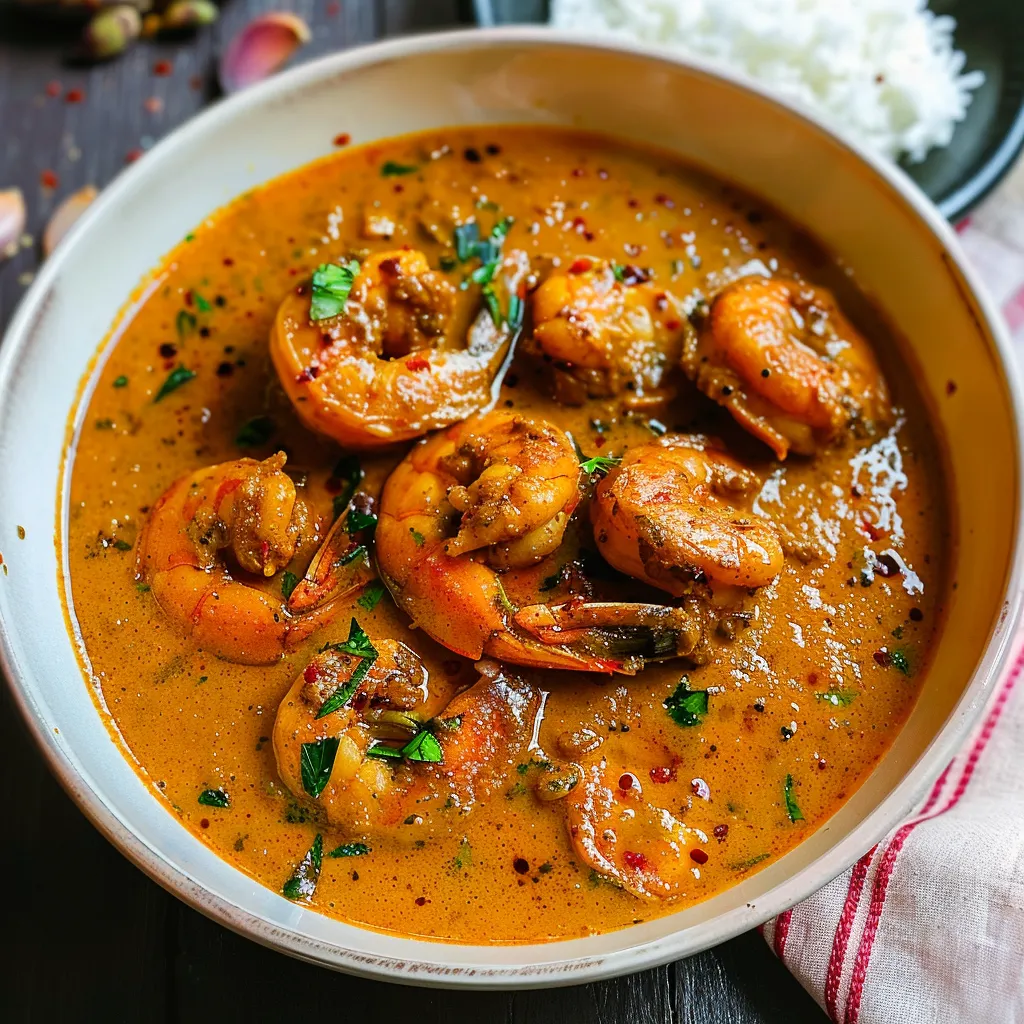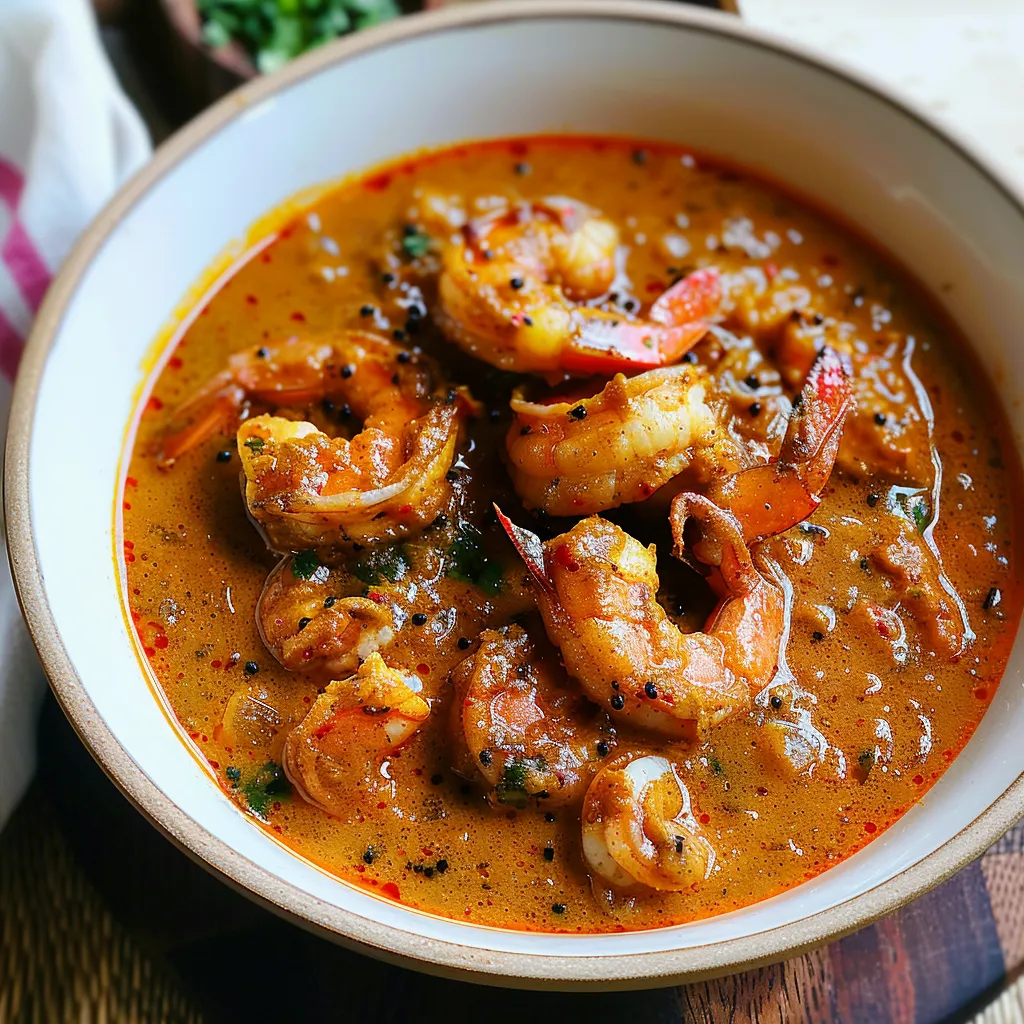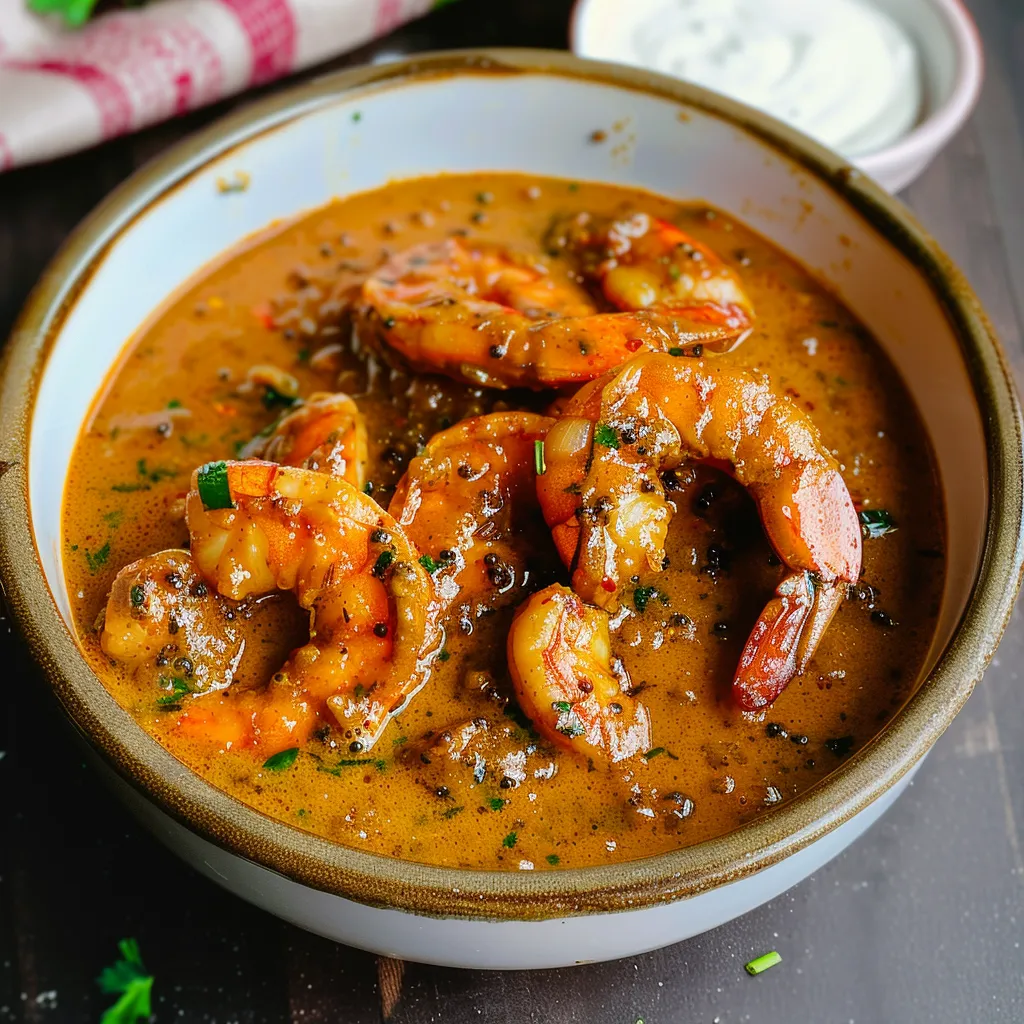 Pin it
Pin it
A beloved treasure of Bengali cuisine, Chingri Malaikari transforms succulent prawns into a luxurious curry bathed in coconut milk. This aromatic dish balances the natural sweetness of prawns with warm spices, creating a rich, golden gravy that's both sophisticated and comforting.
In my grandmother's kitchen, this dish was reserved for special occasions. The moment the whole spices hit the hot mustard oil, the familiar aroma would draw everyone to the kitchen, eager for the first taste.
Essential Ingredients Guide
- Prawns: Choose fresh, medium-sized ones with heads removed but tails intact for the best presentation
- Mustard Oil: Its pungent flavor is crucial for authentic taste - there's no substitute
- Coconut Milk: Use full-fat, first-press coconut milk for maximum richness
- Whole Spices: Fresh cardamom, cinnamon, and cloves create the aromatic base
- Yogurt: Adds tanginess and helps tenderize the prawns
- Onion Paste: Must be ground to a fine consistency for a smooth gravy
Creating Your Malaikari
- Prawn Preparation:
- Season your cleaned prawns with turmeric and salt, letting them marinate briefly while you gather remaining ingredients.
- Building The Base:
- Heat mustard oil until it releases its pungent aroma, then add whole spices until they dance and splutter in the oil.
- Creating The Gravy:
- Carefully layer your aromatics - first garlic, then onion paste, cooking each until their raw flavors mellow and transform.
- Enriching The Sauce:
- Incorporate coconut milk gradually, stirring gently to maintain its creamy texture without breaking.
- Final Symphony:
- Add the prawns at the last moment, letting them gently poach in the fragrant gravy until just cooked through.
 Pin it
Pin it
My family's secret is adding a pinch of sugar at the end - a trick my mother taught me to balance the spices and enhance the coconut milk's natural sweetness.
Perfect Pairings
Serve this curry with steaming basmati rice to soak up every drop of the golden gravy. For a complete Bengali meal, pair with begun bhaja (fried eggplant) and a simple cucumber-onion salad dressed with lime juice. Break tradition occasionally by serving it with hot, buttered naan or paratha.
Thoughtful Variations
Create a richer version by adding halved mushrooms or baby potatoes to the gravy. For heat lovers, introduce green chilies or a dash of kashmiri red chili powder. During special occasions, I make a royal version using jumbo prawns and a touch of saffron.
Storage Wisdom
Store leftovers in an airtight container in the refrigerator for up to two days. Reheat gently over low heat, adding a splash of warm water or coconut milk to maintain the gravy's consistency. Avoid freezing as this affects both the prawns' texture and the coconut milk's smoothness.
 Pin it
Pin it
This recipe carries the soul of Bengali coastal cuisine. The harmonious blend of coconut milk, mustard oil, and fresh prawns creates something truly magical. Every time I prepare this dish, the familiar aroma takes me back to festive family gatherings where this curry always held the place of honor at our table.
Frequently Asked Questions
- → What size prawns work best for Chingri Malaikari?
- Medium-sized prawns (around 500g) work best, as they remain tender while cooking and absorb the curry flavors well.
- → Can I use coconut cream instead of coconut milk?
- Yes, you can use coconut cream diluted with a little water for a richer curry.
- → How do I prevent the curry from becoming too thick?
- Add warm water gradually while cooking to achieve your desired consistency.
- → Why do we need to rest the curry before serving?
- Resting for 5-10 minutes allows the flavors to meld and the garam masala to infuse properly.
- → Can I make this curry in advance?
- Yes, it tastes even better the next day as the flavors develop further.
